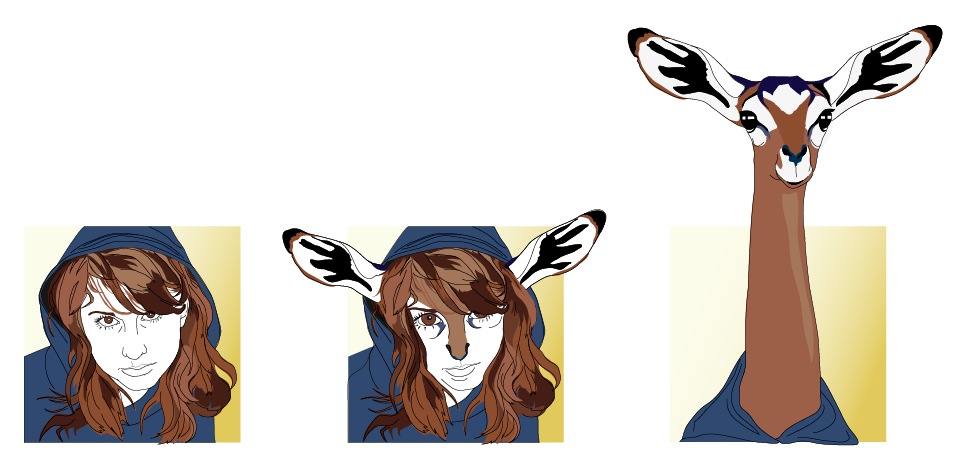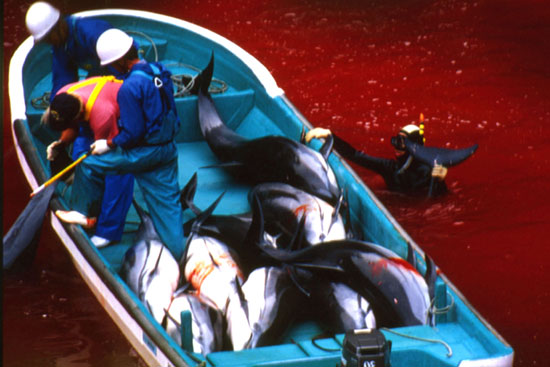
The Friend Feeder
I’m ready enough to post this work in progress of a new animation project, The Friend Feeder.
The Friend Feeder is based on the figure of Leigh Bowery from a painting by Lucien Freud. He’s a sort of ür British green man, watching out over the moors of Northumberland.
Using a probability system, non-linear animated sprites come and go from the stage. Ultimately, all four seasons will unfold over a 146 hour long cycle.
If you click on the link, a file will load that shows summer only – disregard the time stamp at the top of the frame. It begins at midnight.
It’s still fairly buggy – but it’s running. There are day animals and night animals, and some weather input at the moment. The man is stationary, until I film reference footage of the inimitable Lawrence Goldhüber this week.
Here’s some information on the project:
While a Resident artist at Eyebeam Art + Technology in New York this fall, I began developing a non-linear animation system with software artist Jeff Crouse; we are almost finished building the shell of a Flash ActionScript based system that will allow me direct input of animation components.
Actually, we started on this in 2008 as an OpenFrameworks project. But after a year or so, realized it was too much like emulating Flash. So heeeere we are.
In this first incarnation of the work, I am building a very long animated cycle that represents one year of real time: animated objects are placed on a stage, and code determines the frequency and order of their appearance. No cycle is identical to the last, because the appearance of characters and seasonal weather are based on probability. One year of narrative time is condensed into a 146-hour cycle:
1 real-time hour : 1 animation minute
1 day : 24 minutes
1 season : 36.5hours
1 year : 146 animation hours
Seasons unfold, snows fall, days pass and moons rise, animals come and go. We do not know if the man in the garden is alive or some kind of magical food: he sits naked, day in and day out, and offers his body as nourishment to the garden feeders. Fog, vehicles, mythical nature pass through and have various interactions on stage, sometimes absurdly (like the 1% chance that a flock of Fairies will pass through on a Midsummer night).
Love
My cousin Pejk Malinowski sent me this poem last night by Robert Creeley. I am smitten.
Love
The thing comes
of itself(Look up
to see
the cat & the squirrel,
the one
torn, a red thing,
& the other
somehow immaculate)– Robert Creeley
#39 The Riddle of The World
(Poem #39) The Riddle of the World
Know then thyself, presume not God to scan
The proper study of Mankind is Man.
Placed on this isthmus of a middle state,
A Being darkly wise, and rudely great:
With too much knowledge for the Sceptic side,
With too much weakness for the Stoic’s pride,
He hangs between; in doubt to act, or rest;
In doubt to deem himself a God, or Beast;
In doubt his mind and body to prefer;
Born but to die, and reas’ning but to err;
Whether he thinks to little, or too much;
Chaos of Thought and Passion, all confus’d;
Still by himself, abus’d or disabus’d;
Created half to rise and half to fall;
Great Lord of all things, yet a prey to all,
Sole judge of truth, in endless error hurl’d;
The glory, jest and riddle of the world.
— Alexander Pope
fucked up awesome books
Yes – say it like it is.
Sorry to be such a child, but I have no better language to describe how provocative, dark, pure (following the heart, following internal logic, following a line of inquiry), genre-bending, and ideologically challenging these works of fiction are.
1. Bear, Marian Engel
2. An Episode in the Life of a Landscape Painter, César Aira
Put pressure on dolphin slaughter in japan
Just watched The Cove.
Besides its effectively genius simple mediation techniques (TVs strapped to protesting bodies in public spaces jihad-style; happy dolphin balloons armed with covert spycams), the fundamental argument is… unarguable. Dolphin slaughter should become an embarrassing harpoon in Japan’s public image.
– as top-of-the-food-chain eaters (like us), dolphin meat contains toxic levels of mercury (as much as 2000ppm, when safe consumption levels are .4 ppm);
– the yearly slaughter in Japan is an apparent add-on to the lucrative business of supplying tourist complexes with dolphins for swim n pet pools. Dolphins should not be kept in most or all captive situations, it causes high and depression to animals who need complex social and geographical ranges.
– most allegiances to Japan’s position on dolphin and whale killing are bought.
You can take action by texting the word DOLPHIN to sms # 44144.
The movie’s populist/activist site is here.
I followed the rather complex discussion on H-Net’s H-Animal after the SeaWorld killing of trainer Dawn Brancheau by the orca named Tilikum. What I’m going to note is a stretch, I admit, but not unlike eating meat (which I do), in which the animal in its natural state has long disappeared and what you are left with is something delectable, if not cleanly packaged, animals in zoos and aquaria are easy to perceive as a packaged commodity, far removed (even with info graphics as to their origin and natural ways of life). Neither eating meat nor consuming animals as entertainment – even when framed as sustaining or nourishing or educational – is defensible.
As usual, a better summary lies elsewhere.
Excerpt from Andrew Revkin’s dot.earth, one of the NY Times’ blogs:
I asked Carl Safina, the marine biologist, ocean campaigner and author, whether he thought utilitarian or ethical arguments dominated the film. Here’s what he said:
The film is an astonishing achievement. On your question about our relationship with fellow species, this question can be debated along several lines: sustainability, human health, humaneness, and our relationship with other species.
Killing the dolphins in those numbers is clearly sustainable.
Their meat is high in mercury but eating a little won’t hurt you, although eating it routinely could cause problems.
The dolphins are capable of panic and pain, both of which they suffer in this hunt. For millenniums, seafarers and shore-dwelling people have almost universally found dolphins to be beautiful and inspiring, and for that reason as well as their high intelligence, the human relationship with them has been special.
However, I’m uncomfortable forcing my values on other people. I like to catch and eat fish; some people understandably find that immoral. Eating dolphins is also unnecessary, but we all like to do a lot of unnecessary things, from playing baseball to going for a drive on a Sunday to eating hamburgers. And certainly Americans kill and eat tremendous numbers of cattle, which, like dolphins, are warm-blooded mammals that suckle their young.
But perhaps the most universal hallmark of human progress is the desire to minimize infliction of suffering. We have strict codes for how animals slaughtered for food must be killed, and much of it has to do with lessening their suffering.
The main problem with killing marine mammals — a much bigger problem than whether a small amount of killing is sustainable — is that it is cruel. Every real advance in human thought has had to do with expanding our circle of compassion. Cruelty to animals seems to parallel cruelty to people. So, I think the international condemnation of the dolphin killing is fair enough. There is no denying the fact that it is brutal business.
Personally, I detest the dolphin killing. One cultural aspect is worth noting: it is curious that the Japanese hunt seems to arouse more ire than the Faeroese pilot whale hunt, which is equally gruesome. Perhaps this is mere cultural bigotry. Perhaps it is because Japan’s behavior regarding dolphins, whales and fishing is so outside global norms. And because their policies in international bodies such as fisheries commissions, the whaling commission, and the Convention on International Trade in Endangered Species are disruptive enough to have global consequences.
Another fascinating aspect of the film that I discussed was simply that Mr. Psihoyos had perfected a new way of telling true stories that is something other than journalism — and fills a gap as the resources and reach of traditional media shrink.
With small high-definition cameras and the power of the Web, anyone — from a community activist to a journalism student — can now document and disseminate imagery on issues that matter. Also, activists have recruited enough supporters (Bob Barker buying a ship for the Sea Shepherd Conservation Society, for instance) that they can patrol the vast southern ocean tracking Japan’s whaling fleet when the media, and even other governments, are unable to do so. In the end, as I’ve been saying lately, it appears that traditional media are a shrinking wedge of the expanding pie of global electronic storytelling. “The Cove” is an example of someone creatively filling the void.

+++

